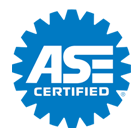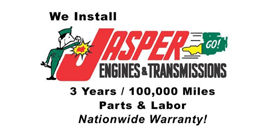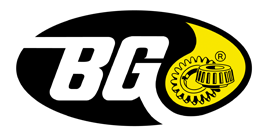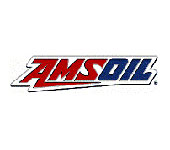AUTONET TV
Archive for September 2020Start Me Up (Ignition Systems)Posted September 27, 2020 1:26 AMWhen you start up your gasoline engine car, you may not know that it's using the same ignition principles as it has for decades. You have spark plugs that require enough power so a spark can jump across a gap at its tip. Years ago, a vehicle's 12-volt system had to produce 15,000-25,000 volts to do that, so engineers came up with something called an ignition coil that bumps up the voltage. It also has to be done at just the right interval called timing. The first systems had a distributor, a mechanical device with a rotating disc that switched the power to the ignition coil on and off. That higher voltage then was sent to the spark plugs at the correct time interval. But the mechanical "points" had to be replaced and adjusted every 12,000 miles/20,000 kilometers. Engineers later replaced the switching mechanism with solid state ones, but they still needed replacement after 120,000 miles/200,000 kilometers. The next evolution came in the 80's when the distributor was replaced with a couple of sensors which talked to a computer. This "DIS" (distributor-less automotive ignition system) was a big advance. Plus, it didn't use just one ignition coil for all the cylinders. It had coil "packs" that each provided spark to two cylinders. That way, the voltage could be boosted even higher, to 30,000 volts, which helped engines be able to ignite a leaner fuel/air mixture. Recently have come even more improvements. Now instead of coil packs, there's a coil that's attached to each spark plug. No more spark plug wires means less maintenance. Plus, a stronger, hotter spark of 50,000 volts can make an engine more reliable, increase fuel economy and reduce emissions. No matter what ignition system your vehicle uses, your vehicle service facility has a staff of technicians trained to work on the latest technology. Make sure to have your vehicle maintained regularly so you can take full advantage of these modern engineering marvels. Hill's Auto Repair, Inc. Don't Neglect Your Spare (Spare Tire Care)Posted September 20, 2020 10:18 AMIf you've ever had a flat tire, then you know welcome it is to have a spare tire that is properly inflated, in good shape and easy to get to. Problem is many of us don't even give our spare tire (if we even have one) a second thought. If you have an SUV or truck with a spare, it may be mounted outside the vehicle, such as on the tailgate or underneath the vehicle. All of them, especially those underneath, take the brunt of debris, moisture, salt and dirt from the road surface, a potpourri of corrosion potential. The hardware that holds these on can rust into a solid mess, making it hard for you or even a roadside assistance service to get off. If you have one of those, have it checked and maintained at your vehicle repair facility on a regular basis. They should be lubricated and cleaned periodically, and some recommend doing this service every time you have your tires rotated. If the spare is the same size as the tires on the vehicle, it may be a good idea to have it rotated with the others. Some vehicles have compact spares that are in a small well in the trunk or some other spot. Most drivers don't pay any attention to them. Over time, air leaks out of those spares, leaving them flat when you most need them. When you have your vehicle in for service or routine maintenance, ask your service advisor for his or her advice on making sure the spare is inflated properly and cleaned, usually at least twice a year. You may not know it, but your vehicle may not have any spare at all. Instead, it may have an inflator kit that you are supposed to use to inflate and seal a flat tire. That sealant has a limited life span and should be replaced every few years. Check with your service advisor to make sure the kit is up to date and will do the job when called upon. Manufacturers know a flat tire's always a possibility. No matter what contingency solution they've included with your vehicle, keep it in shape and in good working order. When you need it, you'll be very glad you did. Hill's Auto Repair, Inc. The Red Menace (How to Deal with Rust)Posted September 13, 2020 10:57 AMRust. It's worse if you drive in places that use salt on the roads in winter, or if you spend time driving near a body of salt water. But any vehicle has to deal with rust after years on the road. And it's not just that rust can eat away your vehicle's body and fenders. It can be a real problem around your suspension, drivetrain or any place where there's metal. Rust takes its time. You don't see it until it's already done its dirty work. It can wreak havoc with your electrical system. Sure, vehicle manufacturers do their best to keep it to a minimum, but especially with road treatments like brine around, their task is a difficult one. The one spot everyone notices is in the paint. You see a little bubbling under the once-smooth surface. By the time it bubbles, it's well involved in rotting away that spot of your vehicle. You wouldn't believe how just a little thing can start the process on its way. A stone chips the paint down to the metal, moisture and salt reach the steel and rust is off and running. It could be a scratch in the paint, a little dent, acid from a parking garage, tree sap, you name it. If you spot it, show it to your service advisor because rust can be more than a cosmetic problem. It can be a safety issue. While you can see the rust destroy your vehicle's body, you can't see it destroying your engine. But it can. It can eat away at such areas as air intakes or the exhaust system. Not only can it reduce performance, but also it can disable electrical connections. In this day and age where just about everything in your vehicle has a computer component to it, just a small electrical problem can strand you at the roadside. Corrosion can attack your vehicle's chassis or frame, and they are what provide the structural strength and stability for everything attached. Think powertrain, suspension, axles, window frames. The list goes on and on. Structural integrity is vital to safety, so the stakes are high. Now you can see why rust damages more than just the good looks of your vehicle. There's one thing to remember about corrosion - much of it is only visible from underneath the vehicle. When you bring your vehicle in to Hill's Auto Repair, Inc. for service, our technician can look for any problems from that important vantage point. It's always a good idea to point out any spots that you think might spell trouble. That way you can stay ahead of it and beat rust at its own game.
Don't Be Shocked (Shock Absorbers)Posted September 6, 2020 11:08 AMIf you've ever ridden down a rough road on your bicycle, you know how hard a ride it can be. Yet drive down the same road in your car, truck or SUV and it miraculously will smooth out the ride. That's because it is equipped with shock absorbers. They are built to dampen impacts from road irregularities. But after taking hundreds of hits from potholes, railroad tracks and curbs, your shock absorbers can wear out. Besides the rough ride that can cause, there are other ways your vehicle's performance can be affected. When it comes to braking for example, you may take a longer distance to stop. That's because shocks help keep your tires in contact with the surface of the road. If the shocks aren't working properly, the tires won't make contact like they should. So when you slam on the brakes, your vehicle will take longer to stop. Consider what worn out shocks are doing to your tires. Since the bumps aren't being dampened as much, your tires can bounce up and down more. That can produce a problem of uneven wear called cupping. And when you start out from a stop, your vehicle may not have the traction it should since the shocks aren't keeping them down on the road as you accelerate. If you have front wheel drive, you may lose some steering control on acceleration. Obviously, many of these things involve safety concerns. Pay attention to any deterioration in your vehicle's ride quality. If your vehicle is starting to bounce up and down and its ride feels bumpier than before, head on over to your vehicle service facility and get your suspension checked out. Do the same if steering response isn't as good as it used to be. Notice that your vehicle nose dives when you brake? Are your tires wearing in an unusual manner? All are signs that your shocks may be on their last legs. If the last time you replaced your shocks was 50,000 miles/80,000 kilometers ago, a technician should evaluate them. Don't be "shocked" if it's time for new ones.
| ||
SearchArchiveSeptember 2011 (18)October 2011 (3) November 2011 (5) December 2011 (4) January 2012 (5) February 2012 (3) March 2012 (5) April 2012 (4) May 2012 (5) June 2012 (4) July 2012 (4) August 2012 (5) September 2012 (4) October 2012 (5) November 2012 (4) December 2012 (4) January 2013 (4) February 2013 (4) March 2013 (4) April 2013 (4) May 2013 (5) June 2013 (4) July 2013 (4) August 2013 (4) September 2013 (5) October 2013 (5) November 2013 (4) December 2013 (4) January 2014 (5) February 2014 (4) March 2014 (4) April 2014 (4) May 2014 (5) June 2014 (4) July 2014 (4) August 2014 (5) September 2014 (4) October 2014 (5) November 2014 (4) December 2014 (5) January 2015 (4) February 2015 (4) March 2015 (4) April 2015 (5) May 2015 (2) June 2015 (6) July 2015 (4) August 2015 (5) September 2015 (4) October 2015 (5) November 2015 (4) December 2015 (3) February 2016 (1) March 2016 (7) April 2016 (4) May 2016 (5) June 2016 (4) July 2016 (5) August 2016 (4) September 2016 (4) October 2016 (4) November 2016 (5) December 2016 (4) January 2017 (5) February 2017 (3) March 2017 (5) April 2017 (4) May 2017 (5) June 2017 (4) July 2017 (5) August 2017 (3) September 2017 (3) October 2017 (5) November 2017 (4) December 2017 (3) January 2018 (5) February 2018 (4) March 2018 (4) April 2018 (4) May 2018 (5) June 2018 (4) July 2018 (5) August 2018 (4) September 2018 (4) October 2018 (4) November 2018 (4) December 2018 (5) January 2019 (5) February 2019 (1) March 2019 (4) May 2019 (2) June 2019 (5) July 2019 (2) August 2019 (2) September 2019 (3) October 2019 (5) November 2019 (4) December 2019 (5) January 2020 (5) February 2020 (4) March 2020 (5) April 2020 (1) May 2020 (2) June 2020 (1) July 2020 (1) August 2020 (5) September 2020 (4) October 2020 (4) November 2020 (5) December 2020 (4) January 2021 (6) February 2021 (4) March 2021 (4) April 2021 (4) May 2021 (5) June 2021 (4) July 2021 (4) August 2021 (5) September 2021 (4) October 2021 (5) November 2021 (4) December 2021 (4) January 2022 (6) February 2022 (4) March 2022 (4) April 2022 (4) May 2022 (5) June 2022 (4) July 2022 (5) August 2022 (2) September 2022 (4) October 2022 (5) November 2022 (4) December 2022 (4) January 2023 (5) February 2023 (4) March 2023 (4) April 2023 (5) May 2023 (4) June 2023 (4) July 2023 (5) August 2023 (4) September 2023 (2) October 2023 (1) January 2024 (1) February 2024 (4) | CategoriesAir Conditioning (17)Alignment (16)Alternator (6)Auto Safety (6)Automotive News (8)Battery (20)Brake Service (4)Brakes (22)Cabin Air Filter (8)Check Engine Light (6)Cooling System (19)Customer Detective Work (1)Dashboard (3)Diagnostics (5)Diesel Maintenance (2)Differential Service (4)Drive Train (9)Emergency Items (1)Engine Air Filter (2)Exhaust (12)Fluids (17)Fuel Economy (10)Fuel Pump (1)Fuel Saving Tip: Slow Down (2)Fuel System (48)Headlamps (6)Inspection (10)Keys to a long lasting vehicle (4)Maintenance (59)Monitoring System (3)Oil Change (7)Older Vehicles (4)Parts (8)PCV Valve (2)Safe Driving (1)Safety (6)Serpentine Belt (6)Service Intervals (10)Service Standards (13)Shocks & Struts (11)Shocks and Struts (1)Spark Plugs (2)Steering (16)Suspension (3)Timing Belt (6)Tire Rotation and Balancing (4)Tires (10)Tires and Wheels (42)TPMS (3)Transfer Case Service (1)Transmission (11)Trip Inspection (4)Warranty (2)Water Pump (1)What Customers Should Know (81)Wheel Bearings (1)Windshield Wipers (9)Winter Prep (7)Winter Tires (1) | |










